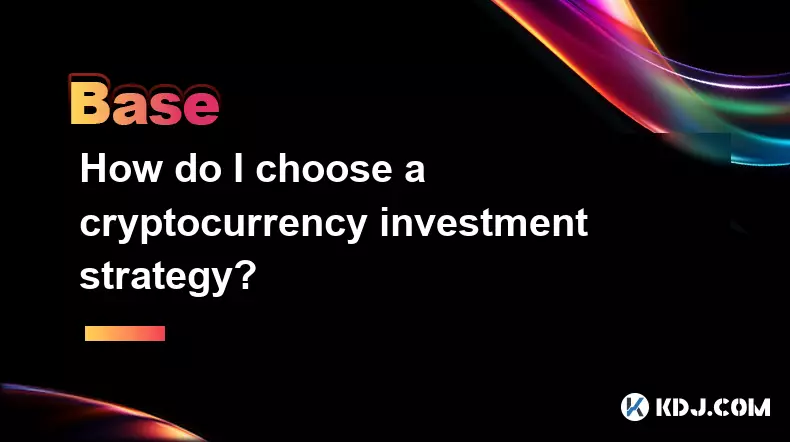-
 bitcoin
bitcoin $109547.008142 USD
0.04% -
 ethereum
ethereum $4011.838726 USD
-0.05% -
 tether
tether $1.000402 USD
-0.01% -
 xrp
xrp $2.798606 USD
0.88% -
 bnb
bnb $970.877944 USD
1.39% -
 solana
solana $202.237275 USD
-0.95% -
 usd-coin
usd-coin $0.999673 USD
0.00% -
 dogecoin
dogecoin $0.229294 USD
-1.15% -
 tron
tron $0.336370 USD
-0.45% -
 cardano
cardano $0.777260 USD
-1.66% -
 hyperliquid
hyperliquid $45.503019 USD
1.73% -
 ethena-usde
ethena-usde $1.000362 USD
0.01% -
 chainlink
chainlink $20.785303 USD
-1.10% -
 avalanche
avalanche $28.755822 USD
-0.11% -
 stellar
stellar $0.358303 USD
-0.48%
How important is privacy protection in Web3? Interpretation of key technologies
Privacy is crucial in Web3; technologies like ZKPs, HE, SMPC, and ring signatures enhance user data protection and trust in decentralized systems.
Jun 05, 2025 at 04:56 pm

In the rapidly evolving landscape of Web3, privacy protection has emerged as a critical component. Web3, often referred to as the decentralized web, is built on blockchain technology and aims to create a more open and user-centric internet. However, the very nature of blockchain, which relies on transparency and immutability, poses significant challenges to user privacy. This article delves into the importance of privacy protection in Web3 and interprets the key technologies that are being developed to address these challenges.
The Importance of Privacy in Web3
Privacy protection is fundamental to the success and adoption of Web3. In traditional Web2 environments, user data is often collected, stored, and monetized by centralized entities. This has led to numerous privacy breaches and a growing distrust among internet users. Web3, with its promise of decentralization, offers a potential solution to these issues. However, without robust privacy measures, the transparency inherent in blockchain technology could expose users to new risks.
Ensuring privacy in Web3 is crucial for user trust and security. Users need to feel confident that their data and transactions are protected from unauthorized access and surveillance. Without this assurance, the adoption of Web3 technologies could be hindered. Moreover, privacy is not just about protecting personal data; it also involves maintaining the confidentiality of financial transactions and other sensitive information.
Zero-Knowledge Proofs
Zero-Knowledge Proofs (ZKPs) are one of the most promising technologies for enhancing privacy in Web3. ZKPs allow one party to prove to another that a given statement is true, without revealing any additional information. This technology is particularly useful in blockchain systems, where it can be used to verify transactions without exposing the details of those transactions.
The application of ZKPs in Web3 is extensive. For instance, ZKPs can be used to create private transactions on public blockchains. This means that while the transaction is recorded on the blockchain, the details of the transaction, such as the sender, recipient, and amount, remain confidential. Projects like Zcash and Ethereum's zk-SNARKs are leading the way in implementing ZKPs for privacy.
Implementing ZKPs involves several steps:
- Understanding the concept: Before implementing ZKPs, it's important to understand the underlying mathematics and cryptography. ZKPs are based on complex algorithms that require a solid grasp of number theory and computational complexity.
- Choosing the right protocol: There are several ZKP protocols available, such as zk-SNARKs and zk-STARKs. Each has its own strengths and weaknesses, and the choice depends on the specific requirements of the application.
- Integration with blockchain: Once the protocol is chosen, it needs to be integrated into the blockchain. This involves modifying the blockchain's codebase to support ZKP verification.
- Testing and deployment: After integration, extensive testing is necessary to ensure that the ZKPs function correctly and do not introduce vulnerabilities. Once tested, the system can be deployed for use.
Homomorphic Encryption
Homomorphic Encryption (HE) is another key technology for privacy protection in Web3. HE allows computations to be performed on encrypted data without decrypting it first. This means that data can remain private even when it is being processed by a third party.
The significance of HE in Web3 cannot be overstated. It enables secure data sharing and processing in decentralized applications (dApps). For example, a dApp could use HE to perform analytics on user data without ever accessing the raw data itself. This preserves user privacy while still allowing for valuable insights to be gained.
Implementing HE in Web3 involves the following steps:
- Selecting an HE scheme: There are different types of HE schemes, such as partially homomorphic, somewhat homomorphic, and fully homomorphic encryption. The choice depends on the specific use case and the level of security required.
- Integrating HE into the dApp: The chosen HE scheme needs to be integrated into the dApp's architecture. This involves modifying the dApp's code to support encrypted data processing.
- Ensuring performance: HE can be computationally intensive, so it's important to optimize the implementation for performance. This may involve using specialized hardware or optimizing the algorithms used.
- Testing and deployment: As with ZKPs, thorough testing is necessary to ensure that the HE implementation works correctly and securely. Once tested, the system can be deployed for use.
Secure Multi-Party Computation
Secure Multi-Party Computation (SMPC) is a cryptographic protocol that allows multiple parties to jointly compute a function over their inputs while keeping those inputs private. This technology is particularly useful in Web3 for enabling secure and private data sharing among multiple parties.
The role of SMPC in Web3 is crucial. It allows decentralized networks to perform collaborative computations without revealing individual data points. For example, in a decentralized finance (DeFi) application, multiple users could jointly compute a financial model without revealing their individual financial data.
Implementing SMPC in Web3 involves the following steps:
- Understanding SMPC protocols: There are various SMPC protocols, such as Yao's protocol and the GMW protocol. Understanding these protocols is essential for effective implementation.
- Designing the computation: The specific computation that needs to be performed must be designed in a way that is compatible with SMPC. This involves breaking down the computation into smaller, secure components.
- Integration into the blockchain: SMPC needs to be integrated into the blockchain's architecture. This involves modifying the blockchain's codebase to support SMPC protocols.
- Testing and deployment: As with other privacy technologies, extensive testing is necessary to ensure that the SMPC implementation works correctly and securely. Once tested, the system can be deployed for use.
Ring Signatures
Ring Signatures are a type of digital signature that can be used to enhance privacy in Web3. They allow a signer to hide their identity within a group of possible signers, making it difficult to trace the signature back to the individual signer.
The importance of ring signatures in Web3 lies in their ability to provide anonymity. For example, in a blockchain transaction, a ring signature can be used to sign the transaction in such a way that it is impossible to determine which member of the group signed it. This adds an extra layer of privacy to the transaction.
Implementing ring signatures in Web3 involves the following steps:
- Understanding ring signature algorithms: Ring signatures are based on complex cryptographic algorithms. Understanding these algorithms is essential for effective implementation.
- Choosing the right ring size: The size of the ring (the number of possible signers) affects the level of anonymity provided. A larger ring size provides more anonymity but also increases the computational overhead.
- Integration into the blockchain: Ring signatures need to be integrated into the blockchain's architecture. This involves modifying the blockchain's codebase to support ring signature verification.
- Testing and deployment: As with other privacy technologies, thorough testing is necessary to ensure that the ring signature implementation works correctly and securely. Once tested, the system can be deployed for use.
Frequently Asked Questions
Q: How do privacy technologies like ZKPs and HE affect the scalability of Web3 applications?A: Privacy technologies such as Zero-Knowledge Proofs and Homomorphic Encryption can introduce additional computational overhead, which may impact the scalability of Web3 applications. However, ongoing research and development are focused on optimizing these technologies to minimize their impact on scalability. For instance, advancements in ZKP protocols like zk-STARKs are designed to be more scalable than their predecessors.
Q: Can privacy technologies in Web3 be used to comply with data protection regulations like GDPR?A: Yes, privacy technologies in Web3 can help comply with data protection regulations such as GDPR. By using technologies like ZKPs and HE, Web3 applications can process and store data in a way that respects user privacy and meets regulatory requirements. However, it's important to ensure that these technologies are implemented correctly and that the overall system design aligns with the specific requirements of the regulations.
Q: Are there any trade-offs between privacy and transparency in Web3?A: Yes, there are trade-offs between privacy and transparency in Web3. While blockchain technology is inherently transparent, privacy technologies aim to obscure certain data to protect user privacy. Striking the right balance between these two aspects is crucial. Some Web3 applications may prioritize transparency for certain operations while using privacy technologies for sensitive data, depending on the specific needs and goals of the application.
Q: How can users verify that their data is being protected by these privacy technologies in Web3?A: Users can verify the protection of their data through several methods. First, they can review the documentation and whitepapers of the Web3 applications they use to understand how privacy technologies are implemented. Second, they can use third-party tools and services that audit and verify the privacy features of these applications. Finally, some Web3 platforms offer transparency reports and privacy audits that detail how user data is handled and protected.
Disclaimer:info@kdj.com
The information provided is not trading advice. kdj.com does not assume any responsibility for any investments made based on the information provided in this article. Cryptocurrencies are highly volatile and it is highly recommended that you invest with caution after thorough research!
If you believe that the content used on this website infringes your copyright, please contact us immediately (info@kdj.com) and we will delete it promptly.
- Altcoin Season Heats Up: Is ARB, PEPE, or a New Challenger Your Best Bet?
- 2025-09-28 10:25:11
- Shiba Inu, Meme Coins, and Popularity: What's Hot and What's Not in the Wild World of Crypto
- 2025-09-28 10:25:11
- Cardano, Toncoin, and the Quest for Crypto's Next Big Thing
- 2025-09-28 10:45:12
- XRP, Ripple, and the Payment Token Race: What's Next?
- 2025-09-28 10:45:12
- MoonBull Mania: Is This the Next Bonk in the Cryptoverse?
- 2025-09-28 10:30:00
- Bitcoin's 'Uptober' Hopes Clash with Selling Pressure: A New Yorker's Take
- 2025-09-28 10:50:01
Related knowledge

What are some common methods of cryptocurrency market manipulation?
Sep 27,2025 at 02:55am
Wash Trading and Its Impact on Market Perception1. Wash trading involves an individual or entity simultaneously buying and selling the same cryptocurr...

How do I read a cryptocurrency whitepaper?
Sep 27,2025 at 05:54am
Understanding the Structure of a Cryptocurrency Whitepaper1. Begin by identifying the executive summary, which outlines the project’s core vision and ...

Can I recover lost cryptocurrency?
Sep 25,2025 at 08:18am
Understanding the Nature of Cryptocurrency Loss1. Cryptocurrency operates on decentralized networks, meaning there is no central authority to reverse ...

How do I choose a cryptocurrency investment strategy?
Sep 27,2025 at 03:55pm
Understanding Risk Tolerance in Crypto Investing1. Assessing personal risk tolerance is a foundational step when entering the cryptocurrency market. V...

How can I earn passive income from cryptocurrency?
Sep 23,2025 at 10:18am
Staking Cryptocurrencies for Regular Returns1. Many blockchain networks operate on a proof-of-stake (PoS) consensus mechanism, allowing users to earn ...

How can cryptocurrency be used for cross-border payments?
Sep 28,2025 at 01:36am
Efficiency in International Transactions1. Cryptocurrency enables near-instant settlement across borders without relying on traditional banking interm...

What are some common methods of cryptocurrency market manipulation?
Sep 27,2025 at 02:55am
Wash Trading and Its Impact on Market Perception1. Wash trading involves an individual or entity simultaneously buying and selling the same cryptocurr...

How do I read a cryptocurrency whitepaper?
Sep 27,2025 at 05:54am
Understanding the Structure of a Cryptocurrency Whitepaper1. Begin by identifying the executive summary, which outlines the project’s core vision and ...

Can I recover lost cryptocurrency?
Sep 25,2025 at 08:18am
Understanding the Nature of Cryptocurrency Loss1. Cryptocurrency operates on decentralized networks, meaning there is no central authority to reverse ...

How do I choose a cryptocurrency investment strategy?
Sep 27,2025 at 03:55pm
Understanding Risk Tolerance in Crypto Investing1. Assessing personal risk tolerance is a foundational step when entering the cryptocurrency market. V...

How can I earn passive income from cryptocurrency?
Sep 23,2025 at 10:18am
Staking Cryptocurrencies for Regular Returns1. Many blockchain networks operate on a proof-of-stake (PoS) consensus mechanism, allowing users to earn ...

How can cryptocurrency be used for cross-border payments?
Sep 28,2025 at 01:36am
Efficiency in International Transactions1. Cryptocurrency enables near-instant settlement across borders without relying on traditional banking interm...
See all articles










































































